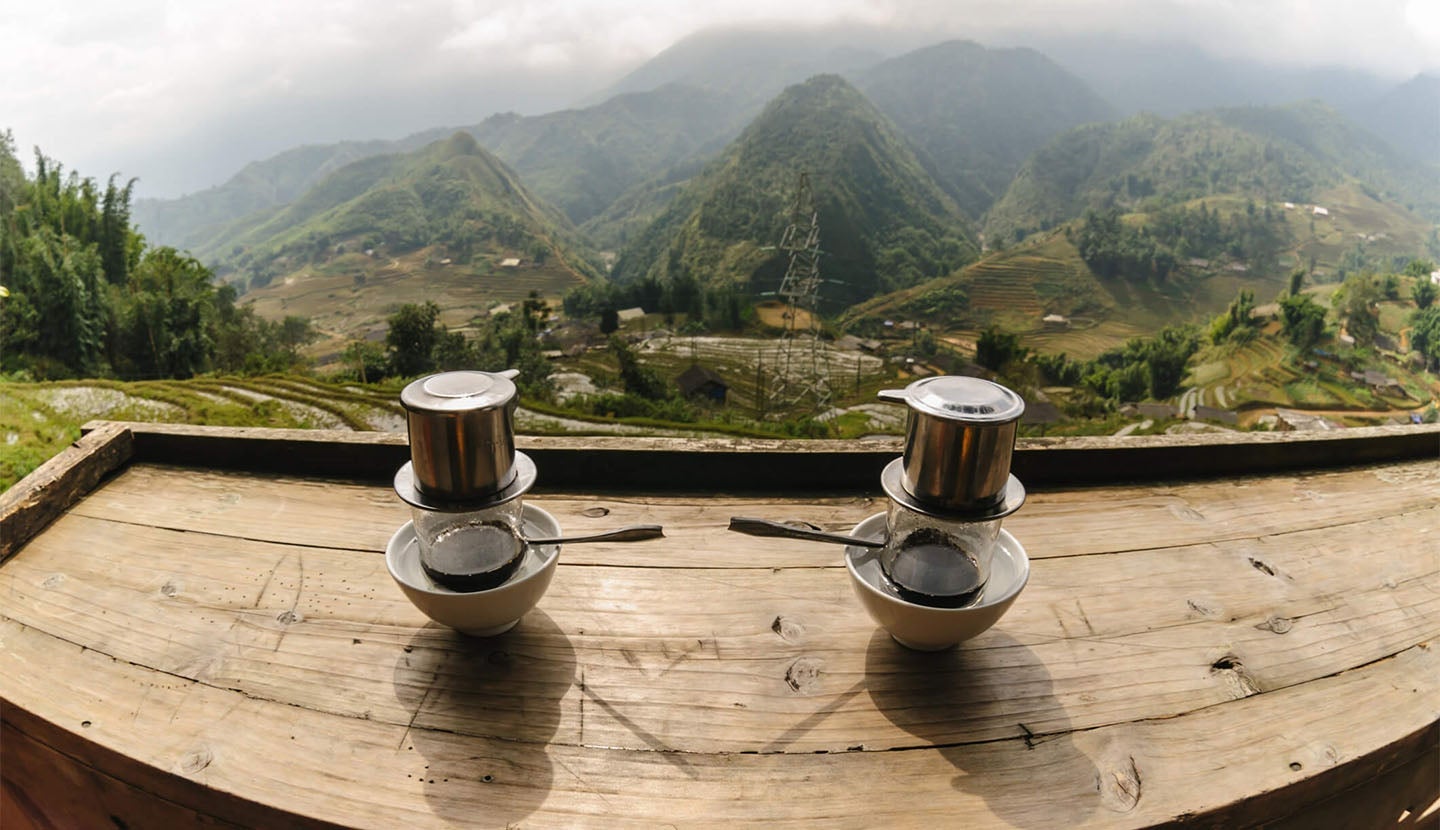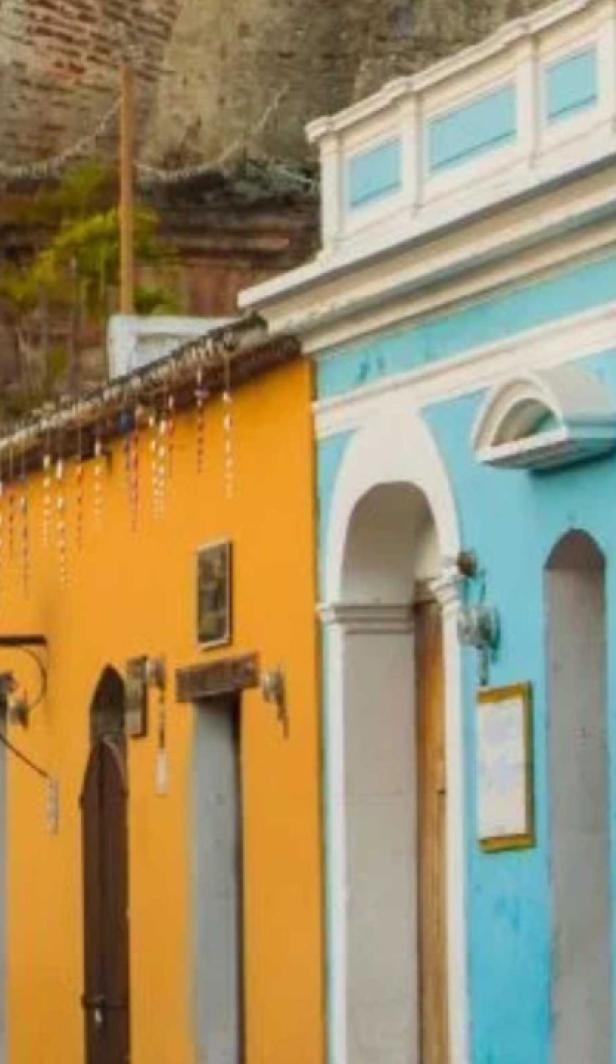Sit back, relax and enjoy
In Vietnam, coffee is appreciated as an essential, valued part of the daily routine. Drunk morning, noon and night, Vietnamese coffee is almost always drip coffee, where coarsely ground coffee beans are slowly roasted for about 15 minutes and are then usually added to a Phin (a French drip filter) with hot water. A Phin is a small cup, used to make individual portions of coffee, and it consists of a filter chamber and a lid. Slowly, the coffee flavour then trickles through to the cup below drip by drip. This allows the opportunity for relaxed chats as well as to savour the rich, intense taste. Despite the hustle and bustle of the city, drinking coffee is a slow affair, a chance to escape the chaos of life.
Whilst coffee can be drunk at home or in a modern coffee shop, traditional sidewalk cafés still attract crowds, pouring tables and seats in the streets until late at night, allowing many to linger for hours over a single glass, socialising and catching up. Coffee is not simply taken “to go”.
Vietnamese coffee is thick, can be served hot or cold, and usually with sweetened condensed milk to fill out the coffee. Sometimes, even yogurt or egg is added. Read on to find out more.
History of Vietnamese coffee
Coffee was first introduced to Vietnam in 1857 by French colonists and a vast amount of land was quickly converted into plantations. By 1890, Vietnam was at the heart of a booming coffee industry.
However, due to dairy limitations, it was quickly made obvious that substitutes would have to be introduced. That’s why adding sweetened condensed milk to dark roast coffee quickly became a tradition.
By 1950, a commercial plant was erected and Vietnam became serious about making coffee. Although other countries in Southeast Asia, such as Laos and Cambodia, were perhaps earlier to the coffee trade, it’s Vietnam that has gone on to become Asia’s top coffee producer.
Unfortunately, after the Vietnam War, the country’s economy seriously suffered. After years of struggling and striving for normality, and with the country focussing on agricultural restructurings, by the 90s, Vietnam’s coffee industry was booming yet again. Its coffee industry continues to thrive and today, Vietnam’s coffee production employs over 2.5 million people.
If the history of Vietnamese coffee fascinated you, why not explore the general history of coffee?
How is Vietnamese coffee made?
Vietnam is the second largest coffee producer in the world, with Brazil being the largest. Second only to rice, coffee is also Vietnam’s largest exported product.
Vietnam primarily grows Robusta coffee beans, famous for its higher caffeine content, lower acidity and therefore, more bitter taste. Although Arabica coffee beans can also be used in Vietnamese coffee. The Robusta coffee plant is easier to care for than other coffee plants, as they are less susceptible to disease, have a greater crop yield, more caffeine content, and more antioxidants.
Traditionally, Vietnamese coffee beans were roasted in a sweetened oil, often mixed with sugar, vanilla and cocoa, which gave the beans the sweet coating and rich flavour. However, today, Vietnamese coffee beans are typically roasted in butter oil for an even roast.
Types of Vietnamese coffee
You won’t find your typical coffee types in Vietnam. As mentioned above, the most common type of coffee in Vietnam is drip coffee. However, there are lots of other imaginative Vietnamese coffee types:
What is it?
Coffee with milk (ca phe nau or ca phe sua)
The famous drip coffee. This is a traditional, dark, strongly brewed coffee, often drunk in the morning. Fresh milk is still not a common ingredient found in traditional coffee shops, so sweetened condensed milk is still served. While it is mostly served cold with ice as Vietnamese iced coffee, you can also order it hot.

What is it?
Coffee with yoghurt (sua chua ca phe)
Like coffee, yoghurt was originally brought to Vietnam by the French. The bottom of the glass is filled with crushed ice, followed by lots of freshly-made yogurt that has been lightly sweetened. Then Vietnamese coffee is poured on top. It results in an almost coffee smoothie. It’s creamy, yet tangy.

What is it?
Vietnamese coffee with egg (ca phe trung)
A popular choice with tourists. A small amount of strong black Vietnamese coffee is poured into the bottom of a cup (about 1/4), followed by a mix of whipped raw eggs and sugar. This creates a meringue like texture and the bitter taste of coffee is perfectly complimented by sweetness. This is typical a dessert coffee, drunk in the evening.

What is it?
Fruit coffees/coffee smoothie (sinh to ca phe)
It’s not uncommon for rich, filtered coffee to be added to fruity smoothies. In Hanoi, a sinh to ca phe chuoi bo (coffee blended with banana or avocado) is the go-to and in Ho Chi Minh, a sinh to ca phe sapoche (coffee blended with tropical fruit sapodilla) is the fruity coffee drink of choice.

What is it?
Weasel coffee (ca phe chon)
This type of coffee is created from beans consumed and excreted by weasels. The weasels are fed coffee cherries, which they then digest and pass in their stool. This is then harvested, aged, and roasted.

Now you know all there is about Vietnamese coffee and its culture, discover all about Swedish coffee.
Today’s community favourites




